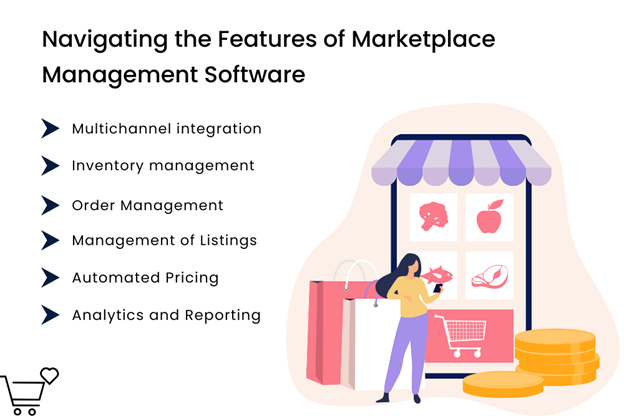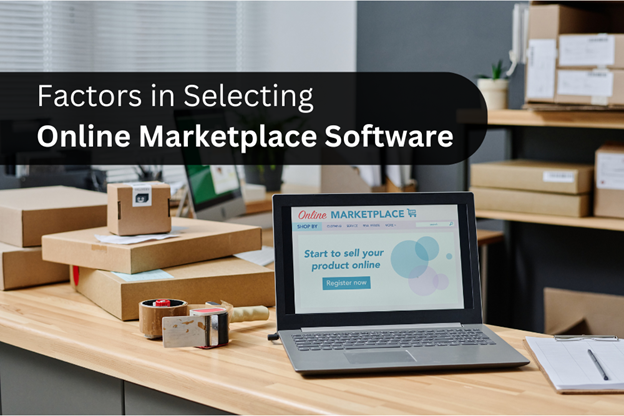Think about trying to run many e-commerce sites without making any mistakes on any of them. The more sales channels you add, the more challenging it becomes to manage your company. Marketplace management software fills this gap by providing a rapid and effective method of managing several channels from a single interface.
We'll go over marketplace management software in extensive detail in this guest post, including what it is, why it matters, and how to pick the best choice for your company. Additionally, you'll discover how this software may enhance your e-commerce approach, increase operational effectiveness, and ultimately raise sales.
What Is Management Software for Online Marketplaces?
Businesses may manage their sales across several e-commerce platforms from a single dashboard with the use of online marketplace management software. It lets you do things like selling items, processing orders, keeping track of sales, maintaining inventory, and optimizing listings without having to transfer between marketplace accounts.
What Makes Marketplace Management Software Necessary?
Manually running several Internet businesses can result in mistakes, inefficiency, and lost opportunities. Here are some reasons why purchasing the appropriate software is crucial:
Centralized Operations: You can run all of your marketplace accounts on a single platform, allowing you to grow your company through various channels.
Automation: By automating tasks like listing changes and inventory synchronization, you can save time and concentrate on other areas of your business.
Improved Accuracy: Maintaining accurate stock levels in all channels is difficult but essential to avoid selling out or stockouts. Since there is an automatic mechanism for real-time updating, your inventory will be well synchronized across all the platforms.
Scalability: As your operations become more complicated and dimensional, the software should be able to accommodate this growth without sacrificing functionality.
Data Insight: Robust analytics and reporting solutions give you essential information about how well your sales are performing, enabling you to make wise decisions and improve your tactics for more remarkable outcomes.
Most Crucial Features When Choosing Marketplace Management Software!
Focus on the functions that best solve your business needs when evaluating any software. Key ones include,
1. Multichannel integration
Managing listings, pricing strategies, and campaigns across various sales channels can be overwhelming. However, marketplace management software integrated directly with ERP, WMS, and PIM allows for the management of everything in a single platform.
2. Inventory Management
The software should be able to keep the inventory synchronized across all channels. Real-time updates help prevent overselling and stockouts.
3. Order Management
Look for technology that simplifies the process of processing, distributing, and monitoring orders by combining orders from multiple marketplaces into a single dashboard.
4. Management of Listings
The program should assist you in creating, editing, and optimizing listings on several platforms without requiring you to enter each marketplace separately.
5. Automated Pricing
The dynamic pricing tool will help you maintain your competitiveness by modifying your rates in response to competition activity and market developments.
6. Analytics and Reporting
Reports and analytics can help you monitor your performance, spot trends, and make wise business decisions.

Mistakes to Avoid When Choosing Marketplace Management Software!
Many companies that select marketplace management software commit errors that may prove costly. Avoid the following pitfalls:
1. Making a Decision Only on Price
Although cost is an essential factor, it shouldn't be the only one considered. Less costly systems may ultimately lack key functionality and scalability, leading to inefficiencies.
2. Ignoring Scalability
Always go for the software that can grow with your business. Avoid tools that might be sufficient for now but cannot handle increased complexity as your business expands.
3. Overlooking Integration Capabilities
Verify that the program effectively complements your existing resources, such as accounting software, shipping firms, and marketing platforms.
4. Neglecting User Experience
The program needs to be intuitive and easy to use. Using complicated tools might frustrate your staff and slow down operations.
5. Security Measures
Your marketplace management software will handle sensitive data. Ensure it has robust security features to protect your business and customer information.
Steps to Successfully Implement Your Chosen Software
To guarantee effective installation, follow these steps:
Step 1: Define Your Business Needs
Before choosing a tool, evaluate your business needs. Determine the marketplaces you sell on, your sales volume, and pain points in your current process.
Step 2: Look Up and Evaluate Resources
Examine several tools according to their features, cost, scalability, and user feedback. Before committing, use the software's free trials to see how it works.
Step 3: Train Your Team
Train your team on using the new software. This training will enable your team to realize the maximum of the utility offered by this tool.
Step 4: Connect to Current Systems
ERP, CRM, accounting, and other tools and systems must all seamlessly connect with the program.
Step 5: Performance Monitoring
Once the software is in place, track your performance metrics to evaluate its impact on your business. Use the analytics tools provided by the software to optimize your processes.
Final Thoughts
E-commerce businesses looking to expand and streamline their operations must choose the finest online marketplace management software. This may be achieved by focusing on key elements, avoiding common mistakes, and following a systematic implementation process.
With the correct software MapMyChannel, you can position your company for long-term success by increasing sales across several markets, reducing mistakes, and saving time.






